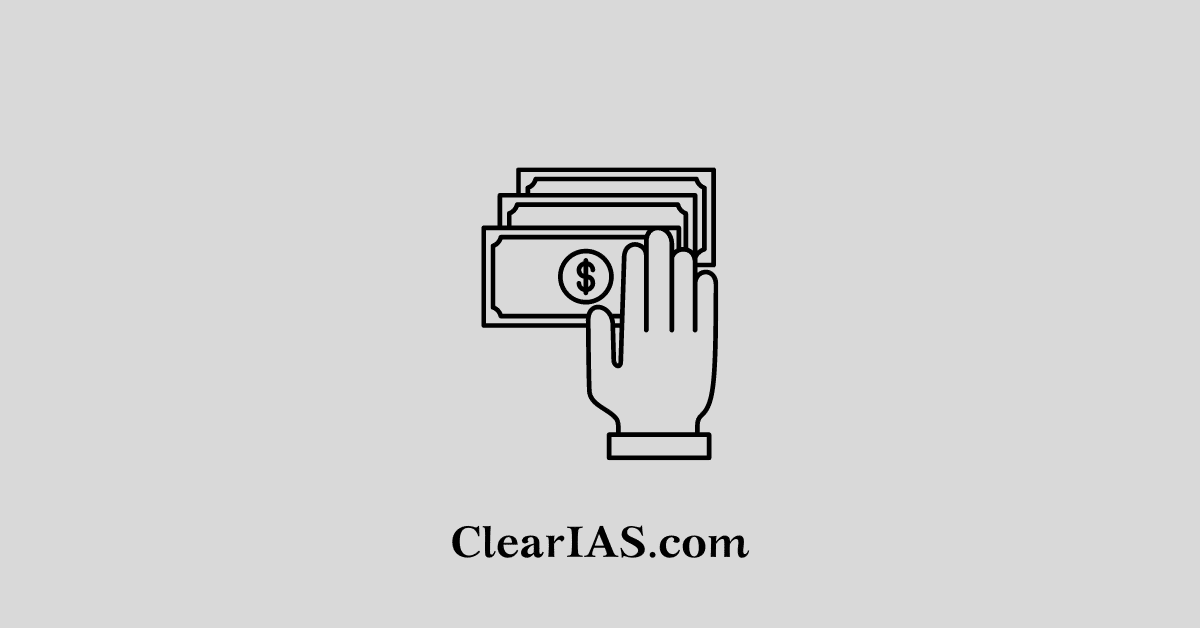 What do you mean by Subsidies? What is the rationale behind providing subsidies? Are subsidies burdening India as a developing country with limited budgetary resources? Read here to know more.
What do you mean by Subsidies? What is the rationale behind providing subsidies? Are subsidies burdening India as a developing country with limited budgetary resources? Read here to know more.
A benefit granted to a person, company, or institution is known as a subsidy.
It is generally provided by the government. Payments made in cash are an example of direct subsidies in India. Tax breaks and premium-free insurance are examples of indirect subsidies.
The purpose of the subsidy is often to alleviate some sort of hardship. It is frequently thought to be in the interest of the public to provide to promote a social good or economic policy.
Types of Subsidies
There are six primary categories of subsidies as follows, divided by purpose. They are as follows:
- Export subsidies – Subsidies given on exports.
- Subsidies contingent upon the use of domestic over imported goods – To promote domestic goods from the cheaper imported goods.
- Industrial promotion subsidies – To promote certain industries.
- Structural adjustment subsidies – To adjust or compensate for the structural deficiencies in an economy.
- Regional development subsidies – It is given for the development of a particular region.
- Research and development subsidies – To promote research and development.
- By beneficiary, there are two primary categories –
- Subsidies that are not limited to specific businesses or industries (non-specific subsidies).
- Subsidies that are limited to specific businesses and industries (specific subsidies).
Other types
- Product subsidy – Subsidies on products are payments made per unit of a produced article or service. A product subsidy is usually due when the good is manufactured, sold, or imported, but it may also be due when the good is transferred, leased, delivered, or utilized for one’s consumption or capital development.
- Production subsidy – The purpose of production subsidies is to increase the production of a specific good such that the market would support it without increasing the final cost to consumers.
- Consumer/Consumption subsidies – These reduce the price of goods and services to the consumer.
- Government subsidies – The government offers subsidies in a variety of types. Welfare payments and unemployment compensation are two of the most prevalent forms of individual subsidies. The main goal of these subsidies is to assist those who are momentarily experiencing financial hardship.
Further subsidies are provided to encourage people to pursue higher education and subsidized interest rates on student loans.
How do subsidies affect our budgetary resources?
India is a developing nation, thus there aren’t many budgetary resources available to expand the reach of subsidies to a larger population.
The amount of food subsidy in the government budget is Rs. 2.06 lakh crore, or around 1.9% of GDP in 2018–19 and 2.5% in 2019–2020.
From 2010–11 to 2019–20, or roughly the narrow range of 18.4% to 20.3%, the revenue to GDP ratio has been stagnant for a considerable amount of time.
The ratio is much higher in many developed and emerging market economies. These ratios for the UK and the USA in 2019 were 36% and 30.1%, for Sweden and the Netherlands they were 48.6% and 43.6%, and for Brazil, it was 31.5%.
Also, Read Direct Benefit Transfer; Freebies politics, Nutrients based subsidy scheme
The rationale behind providing subsidies
Public subsidies can be justified for a variety of reasons: some are political, others are economic, and some are based on socioeconomic development theory. According to development theory, some businesses require protection from outside competition to maximize domestic advantage.
A free market economy is technically devoid of subsidies; adding one turns it into a mixed economy. The value of subsidies and, by extension, the degree to which an economy should be mixed are topics of frequent discussion among economists and decision-makers.
Subsidies in India are provided for a variety of reasons, and they play a significant role in the country’s economic and social policies. These subsidies are designed to address various economic, social, and political objectives.
- Poverty Alleviation: Subsidies are often used as a means of poverty alleviation. They aim to provide essential goods and services at lower prices to economically disadvantaged sections of the population, making them more accessible and affordable.
- Food Security: The government provides food subsidies to ensure food security for the population. The Public Distribution System (PDS) is a prominent example where essential food items are distributed to the poor at subsidized rates.
- Agriculture Support: Subsidies are extended to the agriculture sector to support farmers and enhance agricultural productivity. These subsidies can include fertilizers, seeds, and credit facilities.
- Fuel Subsidies: Subsidies on fuels, particularly cooking gas and kerosene, are aimed at providing energy at lower costs to households, especially in rural and economically disadvantaged areas.
- Education and Healthcare: The government offers subsidies in the education and healthcare sectors to make quality education and healthcare more accessible to the masses. This includes subsidized education in government schools and colleges and affordable healthcare services in public health facilities.
- Export Promotion: Subsidies are often provided to boost exports by making Indian products more competitive in international markets. This can include export incentives and tax benefits for exporters.
- Small and Medium Enterprises (SMEs): Subsidies are given to support the growth and development of small and medium-sized enterprises, which are crucial for economic growth and job creation.
- Environmental Conservation: Some subsidies are introduced to encourage environmentally friendly practices. For instance, incentives may be provided to promote the use of clean energy sources or the adoption of eco-friendly technologies.
- Social Welfare: Subsidies are also used for social welfare programs, including cash transfers to vulnerable populations, maternity benefits, and other forms of financial support.
- Industrial Development: Subsidies may be offered to encourage the growth of specific industries or to attract investment in certain regions, to boost economic development and employment opportunities.
- Price Stabilization: Subsidies are sometimes used to stabilize prices of essential commodities. For example, subsidies on cooking gas can help maintain stable prices for consumers.
- Political Popularity: In a democratic context, governments may use subsidies to gain political support and popularity, especially during elections.
Disadvantages
- Although an increased supply of commodities is one benefit of subsidies, a lack of supply is also a possibility. This is so that manufacturers won’t have to work as hard to fulfill a sudden increase in demand that can result from lower prices. In the end, it may result in extremely strong demand, which raises prices.
- Often, subsidies are efficient and beneficial. The situation would be different if the government released a report on how well it had used subsidies. This is due to the difficulty in measuring the effectiveness of subsidies.
- How will the government raise money to support industry subsidies? Naturally, by levying larger taxes. Therefore, the general public and businesses are the ones who give the resources needed for the government to subsidize industry.
Governments utilize several tools in their toolbox, including subsidies, to accomplish various policy objectives.
From the standpoint of sustainable development, it is essential to address the negative externalities of subsidies while maintaining their market-correcting role and the policy space for development. This is because the world is becoming more interdependent.
Conclusion
It’s important to note that subsidies in India, while aimed at providing support and benefits, can also pose challenges, such as fiscal burdens, inefficiencies, and leakages. To address these challenges, the government has initiated reforms to rationalize and target subsidies more effectively, including the use of digital platforms for direct benefit transfers. Subsidy policies are subject to periodic review and adjustment to ensure they meet their intended objectives while minimizing distortions in the economy.
Article written by: Krishnapriya JR






Leave a Reply